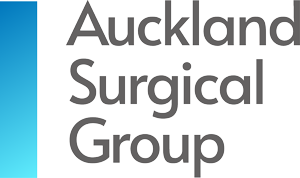Achalasia surgery
Supportive, expert care for a rare swallowing condition.
Achalasia is a rare condition where the valve between the food pipe (oesophagus) and the stomach does not relax as it should. This makes it hard for food and liquid to pass into the stomach. Common symptoms include difficulty swallowing, chest discomfort, and bringing food back up.
At Auckland Laparoscopic Surgery, our skilled team offers advanced treatments, including keyhole (laparoscopic) surgery. We know this condition can feel frustrating and isolating. Our goal is to give you the right care and support, so you can eat and live more comfortably.
Understanding achalasia
Achalasia occurs when the nerves in the oesophagus degenerate, causing two major problems:
- The lower oesophageal sphincter (LES) doesn’t relax when swallowing.
- The muscles in the oesophageal wall lose their normal movement (peristalsis), so food gets stuck.
This leads to symptoms such as:
- Difficulty swallowing (dysphagia)
- Food or liquid coming back up (regurgitation)
- Chest pain, heartburn, or discomfort
- Weight loss due to reduced food intake
Achalasia can develop at any age but is most common in adults between 25 and 60.
Diagnosing achalasia
If you’re experiencing swallowing problems, your doctor may refer you for tests such as:
- Barium swallow X-ray – to show narrowing or widening of the oesophagus.
- Gastroscopy – a camera test to rule out blockages or cancer.
- Oesophageal manometry – a specialised test that measures the muscle pressure in your oesophagus.
A prompt diagnosis is essential to avoid complications like oesophageal stretching (mega-oesophagus) or aspiration.
Treatment options for achalasia
While there is no permanent cure, treatments aim to relieve symptoms by allowing food to pass more easily into the stomach. Options include:
1. Laparoscopic Heller myotomy with partial fundoplication (surgical treatment)
This is the gold standard surgical treatment for achalasia and involves dividing the tight muscle fibres at the lower end of the oesophagus (the myotomy) to allow food to pass. A partial fundoplication (wrapping of the stomach) is usually added to reduce the risk of reflux after surgery.
- Minimally invasive (keyhole) approach
- Performed under general anaesthetic
- Patients usually go home within 1 day
- High long-term success rates
This surgery is available in Auckland and performed by Auckland Laparoscopic Surgery’s experienced laparoscopic surgeons.
2. Balloon dilatation (pneumatic dilatation)
A non-surgical option where a balloon is inflated inside the oesophagus to stretch the sphincter muscle. It can be effective but often requires repeat treatments.
3. Botox injections
A temporary option that involves injecting botulinum toxin into the tight muscle fibres at the bottom of the oesophagus to relax the muscle. Usually reserved for older patients or those not fit for surgery, and now rarely done.
4. POEM (Peroral Endoscopic Myotomy)
This is a newer, advanced endoscopic procedure where the myotomy is performed from inside the oesophagus using an endoscope. POEM is not currently widely available in New Zealand but may be considered in select cases.
Why choose Auckland Laparoscopic Surgery?
- Expert Upper GI Surgeons: Experienced in treating achalasia and other complex oesophageal conditions.
- Minimally Invasive Approach: Keyhole surgery means quicker recovery, less pain, and fewer complications.
- Multidisciplinary Care: Access to dietitians, anaesthetists, and psychological support if needed.
- Local Expertise: We provide personalised care right here in Auckland, with a focus on long-term outcomes and quality of life.
Recovery after achalasia surgery
Most people recover well from Heller myotomy surgery and can return to work within 2–3 weeks. You’ll start on a soft or liquid diet initially, gradually moving to solids as your swallowing improves. We’ll guide you every step of the way.
Improvements in swallowing are typically long-lasting, and many patients experience significant relief from symptoms.
Risks and considerations
As with any procedure, surgery for achalasia carries some risks, including:
- Acid reflux or heartburn (though this is reduced with fundoplication)
- Perforation or bleeding (rare with experienced surgeons)
- Need for further treatment if symptoms return
We’ll discuss these risks with you fully at your consultation and ensure you feel supported and informed in your decision.
Take the first step toward relief
Book a consultation today with one of our specialist surgeons to discuss your options and start your journey toward easier swallowing and better quality of life.
Living with achalasia can affect your enjoyment of food, your weight, and your wellbeing but effective treatment is available. If you’ve been diagnosed with achalasia or suspect you might have it, we encourage you to contact us.

